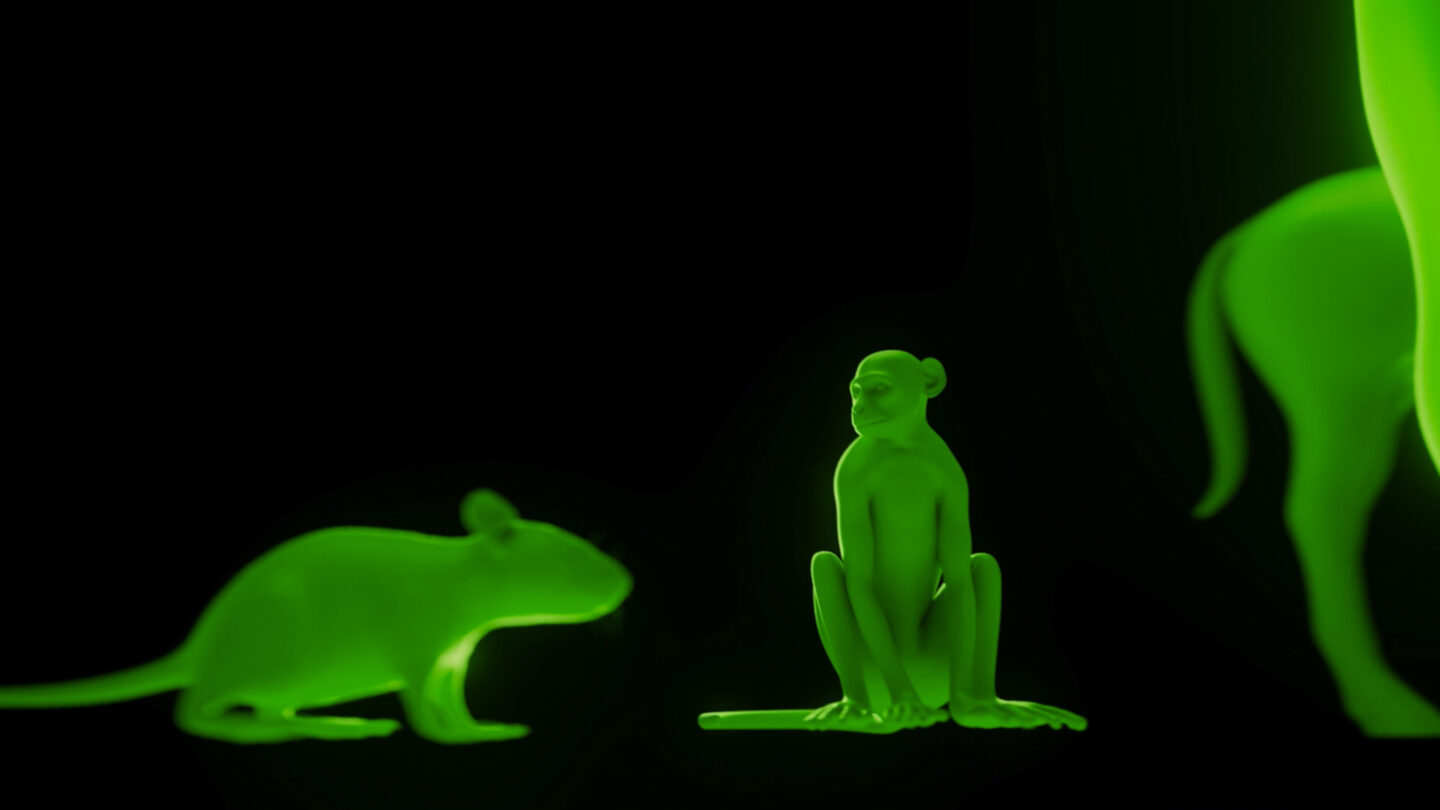Representative Animals
Patient Avatars are animals that are most closely representative of human patients with age-related diseases, and have often acquired the disease naturally.
Why doesn’t everyone use representative animals?
Because traditional drug testing requires hundreds of animals to test just one therapy, drug developers use very small, young animals (like mice or rabbits) that are plentiful and cost-effective to house over time.
In traditional testing, these animals are artificially given symptoms of a disease that attempt to mimic the disease targeted for treatment in humans.
Because Mosaic Screening tests hundreds of therapies in a single sick animal, Gordian can use animals with physiology and biology significantly more like the human patients we eventually want to treat, delivering answers about what’s likely to be effective clinical (human) trials.
Animals have natural biological variations, which are addressed in traditional drug discovery by using statistical methods. However, human patients are not all the same either.
By conducting screens within individual animals, Gordian assesses their physiological and molecular characteristics to interpret the results more accurately and predict their relevance to specific patient populations.
This results in the discovery of powerful information about treatments that reveal what’s most likely to be effective in clinical trials.
While the Gordian platform allows the use of more advanced animal models, these models still aren’t human. We mitigate this in two ways: Identifying the most human-like animal models for the disease of interest, and finding the subset of humans most likely to respond to the therapies discovered in that model. By leveraging the same gene therapy, single cell sequencing, and machine learning technologies used for our screens, we explore the similarity of animal models to the human system, and examine the effects of screen hits in human systems ex vivo, providing us with the unique opportunity to further prioritize therapeutics we advance into development on the basis of patient-relevant phenotypes.

-

Mosaic Screening
Mosaic Screening is Gordian’s unique version of pooled in vivo (inside the animal) screening in which hundreds of therapies (not just one) are tested in a single sick animal.
Read More about Mosaic Screening.
-

Pythia
Instead of focusing on just one hypothesis about a specific disease, Gordian’s Pythia examines the entire transcriptome (the complete set of RNA molecules expressed from the Patient Avatar’s genes) to see how potential therapies affect various cellular pathways.
Read More about Pythia.
